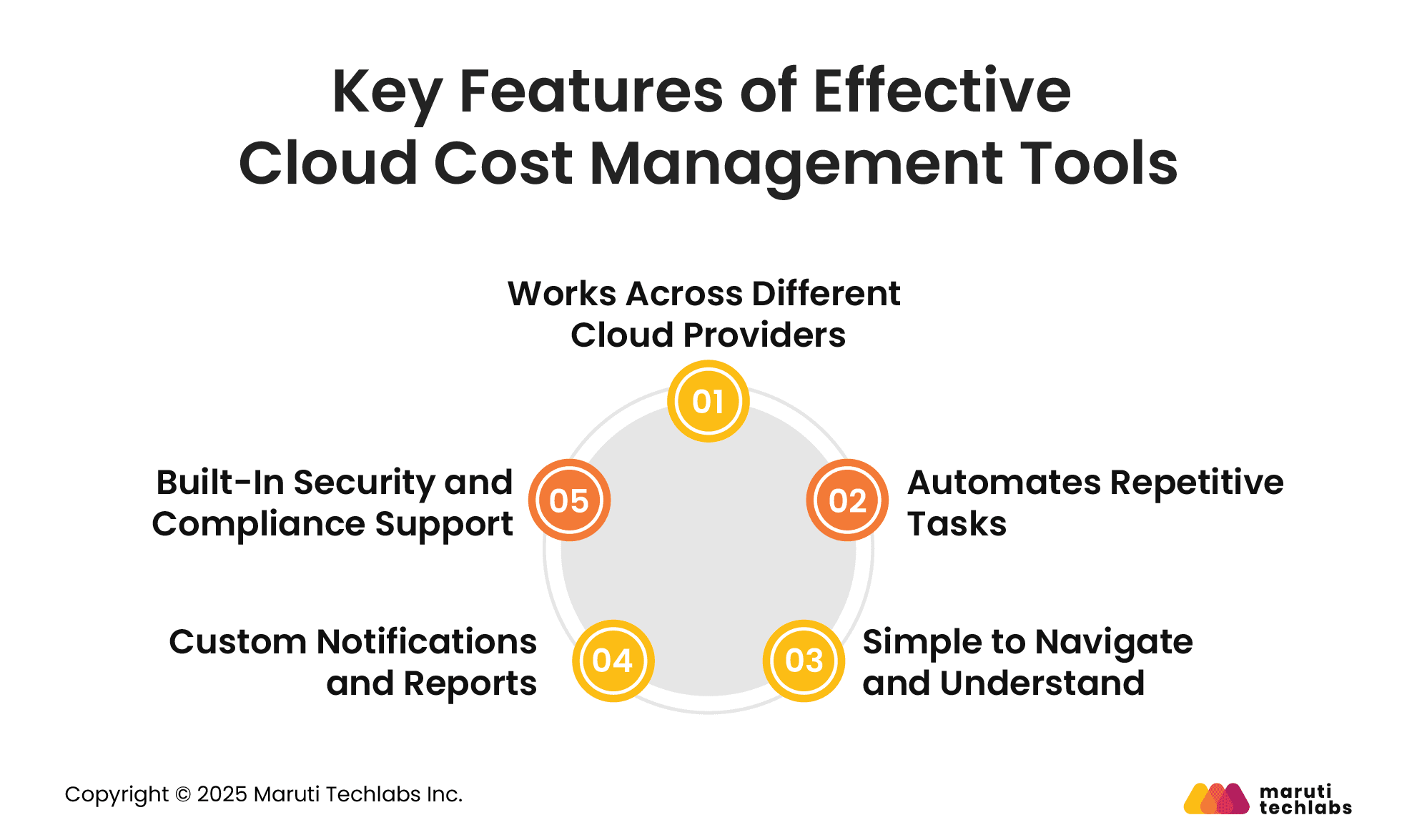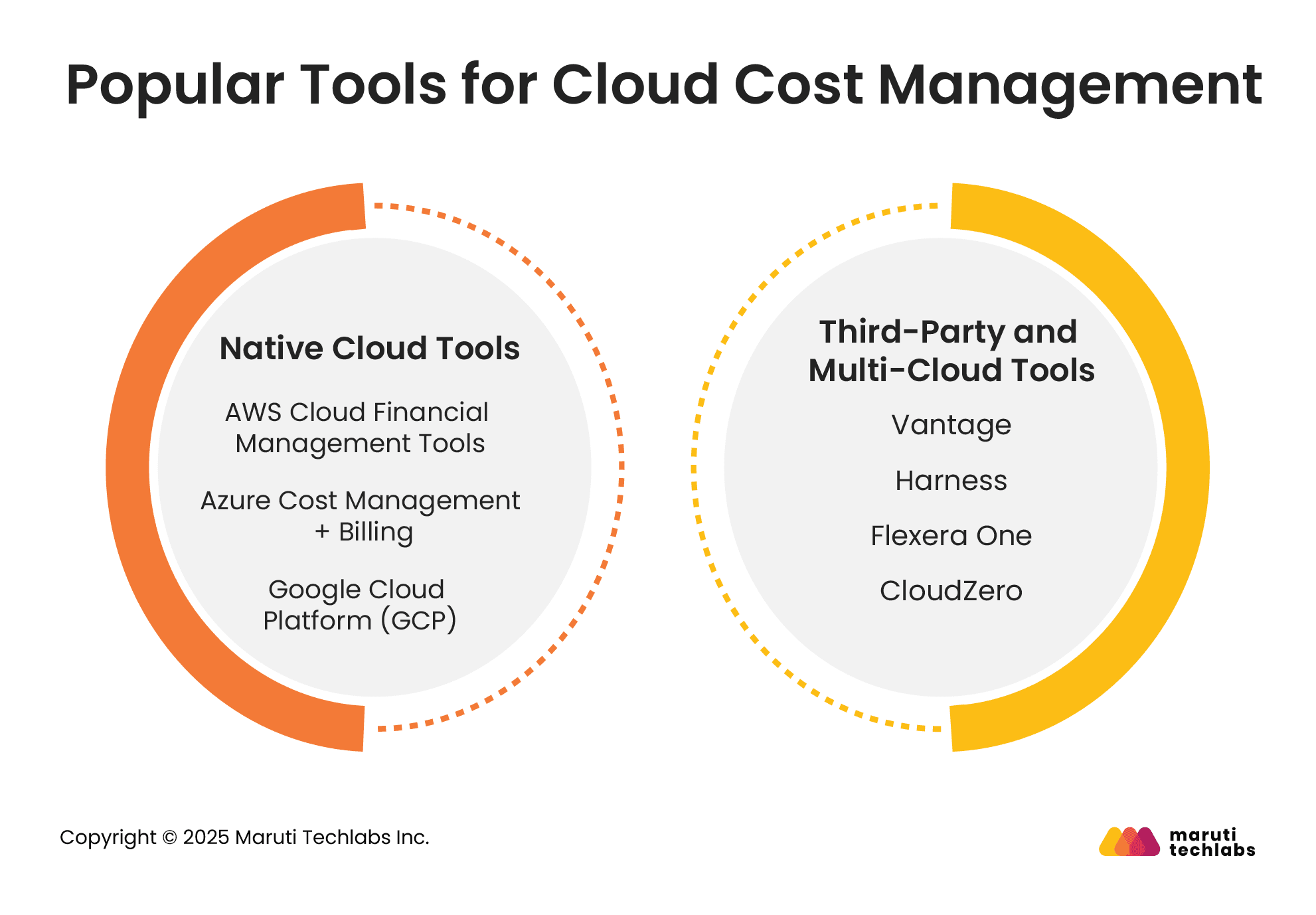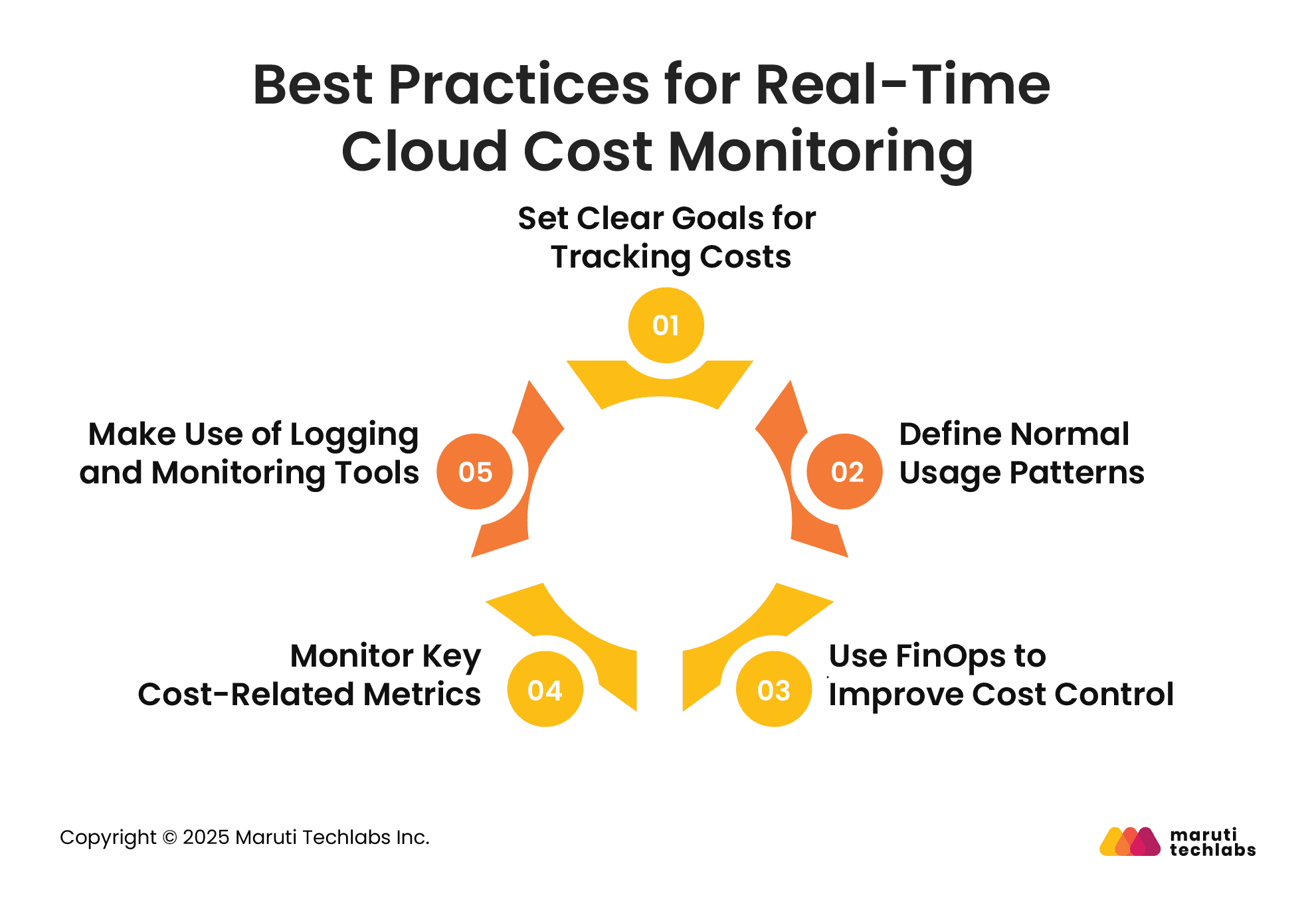

Cloud Cost Management: How to Reduce Waste and Boost Efficiency






While cloud infrastructure provides flexibility and scalability, poor management can lead to escalating costs and reduced performance. Many businesses face underutilized resources, slow application response during peak hours, and unexpected bills that strain budgets. Gartner projects global public cloud spending to exceed $723 billion in 2025, up from nearly $595 billion in 2024.
As adoption grows, so do the challenges. The cloud’s pay-as-you-go model and complex billing structures make cost control harder, pushing more organizations to prioritize real-time monitoring and proactive cost strategies.
Real-time cloud cost management helps avoid these issues by providing continuous visibility into how cloud resources are used. It enables teams to detect unusual patterns, fix problems as they arise, and make faster decisions to keep systems optimized and costs under control.
In this blog, we’ll cover what cloud cost management is, why it matters, the key features of effective tools, top solutions available today, best practices to follow, and real-world examples of successful cost optimization.
Cloud cost management is the process of tracking, analyzing, and controlling expenses related to cloud-based services and infrastructure. As more organizations move to the cloud, managing these costs effectively becomes essential to avoid overspending and ensure every dollar is well spent.
Modern cloud platforms offer flexibility, but this also means that resources can scale quickly, sometimes beyond what's needed. Without proper cost management, it's easy to lose track of where the money is going. Businesses may continue paying for unused resources or over-provisioned services without realizing it.
Cloud cost management often depends on how well you manage processing power, storage, and network use.
By actively managing these components, organizations can prevent budget overruns, identify areas for cost savings, and improve resource use. It also helps finance and IT teams align better by offering clear insights into where and why cloud spending occurs.
Choosing the right cloud cost management tool is important for controlling your cloud spending while improving performance. A well-designed tool doesn’t just track expenses, it helps you take timely action and make better decisions. Here are some key features to look for:

Many companies use multiple cloud platforms, like AWS, Azure, or Google Cloud. A reliable cost management tool should give you a single, unified view of all your cloud accounts. This makes it easier to compare usage, avoid duplicate spending, and stay in control of your budget.
Handling cloud operations manually can be time-consuming and lead to mistakes. Tools with automation features can handle tasks like identifying unusual usage, adjusting resources, or recommending cost-saving actions. Automation saves time and helps teams react faster to changes in usage or cost.
A cost management tool should be easy for technical and non-technical users. A clean dashboard, visual graphs, and straightforward navigation help teams quickly understand what’s happening in the cloud without digging through complex data.
It’s important to know when something goes off track. A good tool should allow you to set up custom alerts for cost spikes, resource limits, or usage changes. Regular reports also help you track trends and stay ahead of potential issues.
Security should never be an afterthought. Your tool must follow industry standards to protect data and support compliance needs. This gives your team peace of mind while focusing on managing costs.
These features help ensure your cloud setup stays efficient, secure, and within budget.
To optimize cloud spending and gain better financial visibility, organizations can choose from a wide range of cloud cost management tools, native and third-party. These tools support cost tracking, forecasting, anomaly detection, and automated optimizations across multiple environments.

AWS offers native tools such as Cost Explorer, Budgets, Cost Anomaly Detection, and Reserved Instance Management. These tools help you forecast usage, track spending by service or tag, and detect unusual cost spikes using machine learning.
Azure provides integrated budgeting, forecasting, and anomaly detection features. With Power BI connectors and AI-powered insights, users can drill into detailed cost reports and get custom optimization suggestions via Azure Advisor.
GCP’s Cloud Billing Reports and Cost Tables help visualize usage and costs at the project or resource level. Users can track cost trends, filter by labels, and use forecasting tools to stay within budget.
Vantage delivers deep visibility into multi-cloud costs, including Kubernetes and network flow analysis. Features like budget alerts and automated AWS savings plans help reduce spending.
Known for CI/CD, Harness also offers powerful cost visibility, idle resource detection, and auto-shutdown features. It supports AWS, Azure, GCP, and Kubernetes environments.
Flexera centralizes multi-cloud cost tracking, provides granular allocation by department or project, and uses AI for forecasting and optimization.
CloudZero aligns engineering and finance by offering real-time spending insights, anomaly detection, and cost breakdowns across teams, projects, and features.
These tools empower businesses to enforce accountability, reduce waste, and ensure every dollar spent on the cloud delivers measurable value.
Managing cloud costs in real-time helps businesses stay efficient, avoid overspending, and make the most of their cloud investments. Below are some important practices that can help you keep cloud expenses under control:

Begin by defining what you want to achieve with cloud cost tracking. These goals should match your business priorities, whether reducing costs, improving system performance, or increasing security. Use the SMART approach (Specific, Measurable, Achievable, Relevant, Time-bound) to ensure your goals are realistic and trackable.
You need to know what's normal before you can spot unusual spending or system issues. Set baseline metrics that show how your cloud resources typically perform. Reviewing and updating these baselines helps you catch problems early and keep things running smoothly.
FinOps helps bring clarity and accountability to cloud spending. It gives teams a better understanding of where money is going and what’s driving the costs. Setting up a dedicated team to track cloud expenses and allocating costs to the right departments or projects gives you better control and transparency over your cloud budget.
Keep track of key performance indicators (KPIs) that reflect your cloud usage and spending. Important KPIs include total cloud spend, cost per service, resource usage, and performance efficiency. Monitoring these helps you make better decisions and identify where you can save.
Tools like AWS CloudTrail and GCP Cloud Logging provide detailed insights into how your systems are working. These logs help you detect issues, understand user activity, and fix problems quickly. They also support better planning by showing trends and patterns in usage and performance.
Many companies across industries are cutting down cloud costs without compromising performance. Below are three real-world examples that show how innovative cloud strategies led to significant savings.
Arabesque AI uses artificial intelligence to build flexible investment strategies. As they scaled their AI workloads, they faced rising compute costs. By switching to preemptible instances in Google Kubernetes Engine (GKE) and using pay-as-you-go services like Cloud Run and Cloud Functions, they brought down cloud costs by 75%. At the same time, their data processing capacity grew 10x.
Current offers a debit card and mobile app that helps teens learn money skills. As their users grew, their earlier infrastructure couldn’t scale efficiently. They migrated to Google Cloud, containerized their applications, and used GKE for automated scaling. This shift helped them cut cloud hosting costs by 60% and reduce error resolution time by 80%, improving service reliability and development speed.
Apxor helps app developers improve user experiences without writing any code. They faced performance and cost issues with their previous cloud provider. After moving to Google Cloud, they used Compute Engine, Dataflow, and TensorFlow to manage workloads more efficiently. The result was a 30% drop in infrastructure costs and more time for their DevOps team to focus on innovation.
As cloud adoption grows, so does the need for smarter, real-time cost monitoring. Soon, we can expect increased use of AI and machine learning to predict usage patterns and recommend cost-saving actions.
Businesses will likely integrate FinOps deeper into their workflows, making financial accountability a shared responsibility across teams. Automated alerts, real-time dashboards, and predictive analytics will become standard tools in managing cloud expenses more proactively.
One of our clients, HealthPro Insurance, faced rising costs, performance issues, and security concerns due to reliance on a single public cloud. We helped them transition to AWS with a phased approach, isolate environments, and implement autoscaling. As a result, they reduced infrastructure costs by 50% and improved application performance by 300%. Read the full case study here.
At Maruti Techlabs, we help businesses optimize their cloud infrastructure for performance and cost efficiency. Want to gain better control over your cloud spending? Contact us to explore our cloud application services.
And as you optimize for cost and performance, don’t overlook security. Our comprehensive Cloud Security Services help protect your infrastructure, enforce compliance, and proactively manage risks—ensuring your cloud environment is not just efficient, but secure.
We also offer expert cloud application development services in Dallas to help you scale securely and cost-effectively.
efore you begin optimizing, try our Cloud Migration Cost Calculator to estimate your migration costs accurately and plan smarter for maximum ROI on your cloud investments.
Some top tools for managing Google Cloud costs include Google Cloud Billing, BigQuery for custom reporting, Looker Studio dashboards, and third-party tools like CloudHealth, Spot.io, and Apptio Cloudability.
It’s difficult because cloud pricing is complex, with many services, usage types, and billing models. Costs can change quickly due to scaling, and teams often lack visibility into what resources are being used and why.
These tools help monitor, track, and reduce cloud spending. They provide dashboards, alerts, and reports. Examples include Google Cloud Billing, AWS Cost Explorer, Azure Cost Management, CloudHealth, and Finout.
You can optimize by rightsizing resources, turning off unused instances, using autoscaling, choosing cost-efficient storage, and taking advantage of reserved or spot instances.
The main cost factors are the amount of data stored, how often it's accessed, and data transfer or retrieval fees between regions or services.


